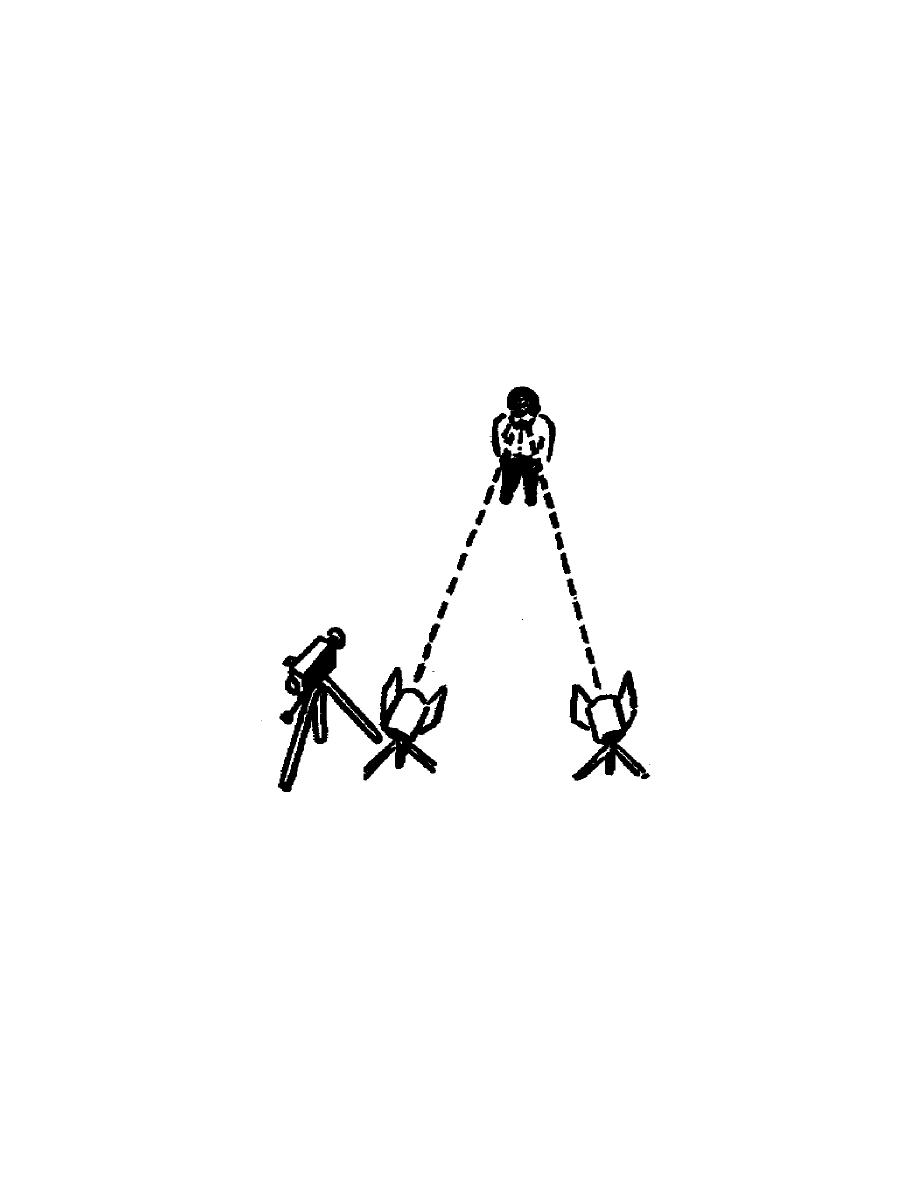
(3) Because it is the strongest light, the key light gives well-defined
modeling of features.
However, a soft light will be required to subdue
harshness and unwanted shadows.
(4) Key light is a hard light; it is easily controlled and beam is
easily focused.
(5) Key light is the basis for facial lighting.
The eyeline is an
imaginary line projecting out at eye level at 90 degrees angle (fig 4-11). Set
key light 20 degrees to either side of eyeline.
(6) If there is too little key light, both sides of the subject's nose
will have shadows.
(7) If there is too much key light, the contrast between light and
shadow will be excessive.
Figure 4-11.
Key lighting using the eyeline concept
b. Back light is behind the subject and pointing towards the camera (fig
4-12).
(1) Hard light is generally used for a back light.
(2) Back light adds a rim or halo. This rimming separates subject from
background which gives the illusion of depth.
79



 Previous Page
Previous Page
